Digital Experiences
Thought Leadership
Sales Center Installation Timeline: What to Expect From Design to Grand Opening
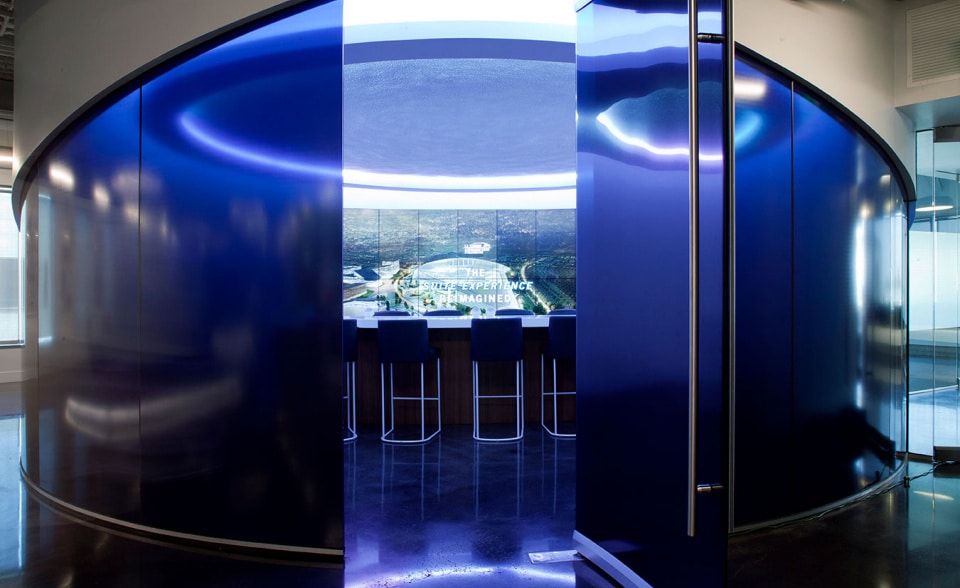
Let’s talk timelines. When teams and universities commit to building a new stadium or major renovation, the sales center often becomes the catalyst for turning architectural renderings into guaranteed revenue.
One of the most common questions development executives ask us, and rightfully so, “How long will this actually take?”
As soon as a new stadium is announced, the countdown begins. While that countdown may be two, three, or four years down the road, tickets have to be sold, fans have to stay engaged and in-stadium sponsors have to be secured. That’s where the experience center comes in. The answer isn’t simple. Let me explain why.
Your stadium sales center isn’t just another construction project. It’s your revenue-generating experience that needs to be operational while plans are still being finalized, contracts are being negotiated, and stakeholders are making billion-dollar decisions. The timeline matters because every week without an operational sales center represents millions in potential lost revenue.
Understanding what to expect from initial concept to grand opening helps your organization plan effectively, align internal stakeholders, and most importantly, start generating revenue as quickly as possible.
So what do we need to do to get the job done?
Phase 1: Discovery and Strategic Planning
The installation timeline begins long before construction crews arrive. The discovery phase establishes the foundation for everything that follows.
During this period, the team will work directly with the organization’s development, sales, and executive leadership to understand not just what needs to be built, but why it needs to exist. This phase involves analyzing the current sales process, identifying gaps in the fan journey, understanding the competitive landscape, and defining success metrics that extend beyond simple square footage.
Advent Sandbox
At Advent, we bring the project to life through an immersive, hands-on experience called a Sandbox. This all-day, on-site session has the Advent project and design team working knee-to-knee with your stakeholders. Through multiple interactive activities, we identify patterns, spark conversation, and align internal teams on goals. The Sandbox fosters deep collaboration, blue-sky thinking, and innovative problem-solving, helping your team define what you want audiences to THINK, FEEL, REMEMBER, and DO throughout the experience.
For the SOFI Stadium Experience Center, Advent hosted executives from the Los Angeles Rams, Chargers, and the Legends team to establish alignment for the $5+ billion stadium project. The Sandbox helped uncover key themes and needs that served both NFL teams and the surrounding entertainment district.
Common questions we answer during the discovery phase:
- Will this feel like another endless consulting engagement with workshops that go nowhere?
- How do we know you understand our specific challenges versus just applying a template approach?
Short answer? Not one bit. Here’s the longer version: This phase often reveals that organizations need their sales center to serve multiple functions beyond premium seat sales, corporate event hosting, recruit visits, fan engagement experiences, and content creation hubs.
These discoveries directly impact design decisions and timeline considerations. A discovery process that uncovers these realities upfront prevents costly redesigns later when someone realizes the space can’t accommodate the recruit visit they’ve been planning for months.
The discovery phase concludes with a comprehensive brief that becomes the north star for the entire project, ensuring every subsequent decision aligns with the organization’s revenue goals and brand vision.
Phase 2: Concept Development and Design
With strategic direction established, the design phase transforms organizational goals into tangible experiences. This is where approaches diverge significantly between firms that understand revenue generation and those that simply design attractive spaces.
Rather than starting with floor plans and fixture layouts, the process begins with story architecture. Mapping the emotional journey visitors will experience from the moment they enter until they’re ready to commit. The design considers how a lifelong fan reacts compared to a corporate sponsor, how to build excitement for something that won’t exist for three years, and how to maintain relevance as construction progresses.

Common questions we answer during the concept phase:
- How many revisions are included?
- What happens if we see the design and realize it won’t work for our sales process?
- Are we locked into the first concept presented?
The design phase produces detailed spatial layouts showing traffic flow and interaction zones, narrative sequences that eliminate gaps in the story, technology integration plans for experiential displays, projection mapping, and RFID activations, renderings and visualizations that help stakeholders understand the vision, and material and finish selections that reinforce brand identity while meeting durability requirements.
Organizations often underestimate the importance of this phase. A beautifully designed space that doesn’t serve the sales process is just an expensive showroom. The design must actively move people toward commitment while giving sales teams the flexibility to adapt their approach for different prospect types.
Design development is iterative, typically involving two to three rounds of refinement as stakeholders provide feedback and the team pressure-tests concepts against real-world selling scenarios. The phase concludes with final approval of all design elements, locking in the vision before fabrication begins.
What about the miniature model of the stadium?
Nearly every major stadium sales or experience center features a scale model of the new venue sitting at the heart of the room. It’s a familiar centerpiece and yes, it’s fun to see what the future looks like. But we take it further with projection mapping.
For the Rams and Chargers, the goal wasn’t just to sell a stadium. They needed to communicate the vision of an entire multi-use entertainment district on gamedays, for concerts, and even for the Olympics more than 15 years before securing the bid. Our projection mapping technology brought the scale model to life, allowing teams to instantly flip between use cases based on who was in the room and what story needed to be told.
The Olympic planning committee even toured the space to visualize what hosting the Games in Los Angeles would actually look like. It transformed a static model into a dynamic, decision-making tool.
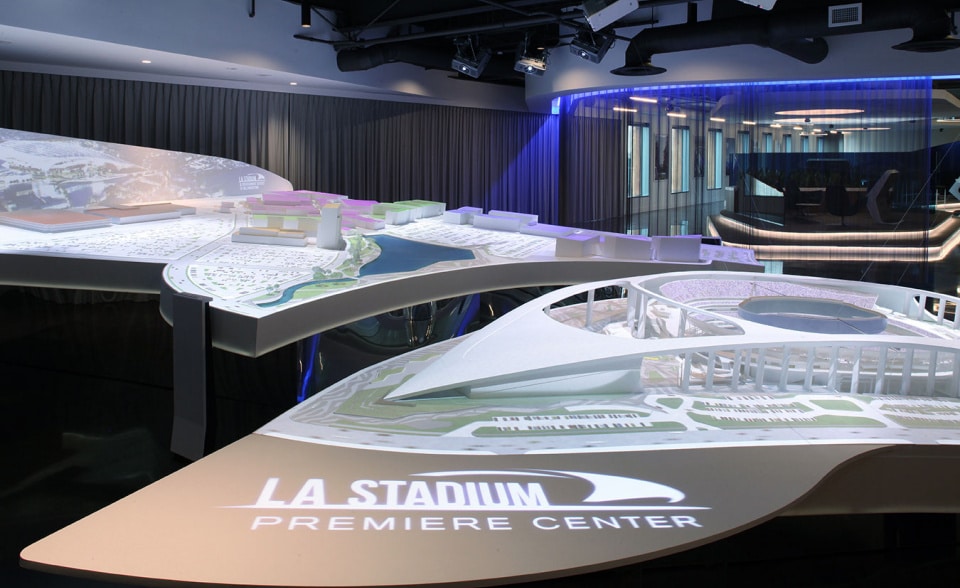
Phase 3: Fabrication and Pre-Production
Once designs are approved, fabrication begins in parallel across multiple vendors and internal production teams. This phase is often invisible to the client organization but represents the most complex coordination challenge of the entire project.
Common questions we answer during the pre-production phase:
- How do we know production is actually happening?
- What if something gets delayed and we don’t find out until installation week?
- Who manages all these different vendors?
Custom millwork and architectural elements begin production at specialized facilities. Digital content creation intensifies, producing the hundreds of hours of media assets that will bring the space to life. Lighting fixtures, audio equipment, and control systems are specified, ordered, and staged. Interactive elements are prototyped, tested, and refined.
The fabrication phase requires constant communication between design, production, and technical teams to ensure all components will integrate seamlessly during installation. This is when potential conflicts are identified and resolved—before crews arrive on site.
Organizations sometimes experience anxiety during this phase because there’s less visible progress compared to the immediate activity of design reviews. However, this is when the investment truly takes form. Quality control happens at this stage, not during installation when modifications become exponentially more expensive and time-consuming.
For projects with aggressive timelines, fabrication can sometimes be compressed through increased production resources, but this comes with cost implications and requires early commitment to design specifications. Teams considering this option need to have unwavering confidence in their approved designs, as changes during fabrication create cascading delays.

Phase 4: Site Preparation and Infrastructure
While fabrication continues, site preparation ensures the physical space is ready to receive the installation. This phase is frequently underestimated in timeline planning, particularly when sales centers occupy existing facilities requiring renovation.
Common questions we answer during the infrastructure phase:
- Who handles the demolition and infrastructure work?
- Is that included in your scope or do we need to hire separate contractors?
- What if we discover problems with the existing building?
Site preparation includes demolition and removal of existing fixtures or finishes, electrical upgrades to handle increased power demands, network infrastructure installation for interactive technology, HVAC modifications to ensure comfort in spaces with high-density displays, lighting infrastructure including theatrical and architectural systems, and structural reinforcement if needed for installations like ceiling-mounted projection systems.
Organizations sometimes discover unexpected conditions during this phase. Examples being asbestos that requires remediation, electrical systems that need complete replacement, or structural issues that impact original plans. Building in contingency time for these discoveries prevents downstream delays. Firms that have completed dozens of installations typically identify potential issues during initial site assessment, minimizing surprises.
The site preparation phase also involves coordination with facility operations, particularly when sales centers occupy locations within existing office buildings or adjacent to active construction sites. Access logistics, noise restrictions, and power shutdowns all need to be carefully orchestrated to avoid disrupting ongoing business operations.
This is also when base architectural finishes are installed; flooring, wall treatments, ceiling systems – creating the canvas upon which the experiential elements will be layered. These foundational elements must be completed and fully cured before installation begins.
Advent partners closely with the architect and general contractor throughout construction to ensure seamless communication. We verify that every electrical outlet, data drop, and lighting fixture ends up exactly where the experience requires it. This proactive coordination significantly reduces surprises once Advent begins installing displays and experiential technology.
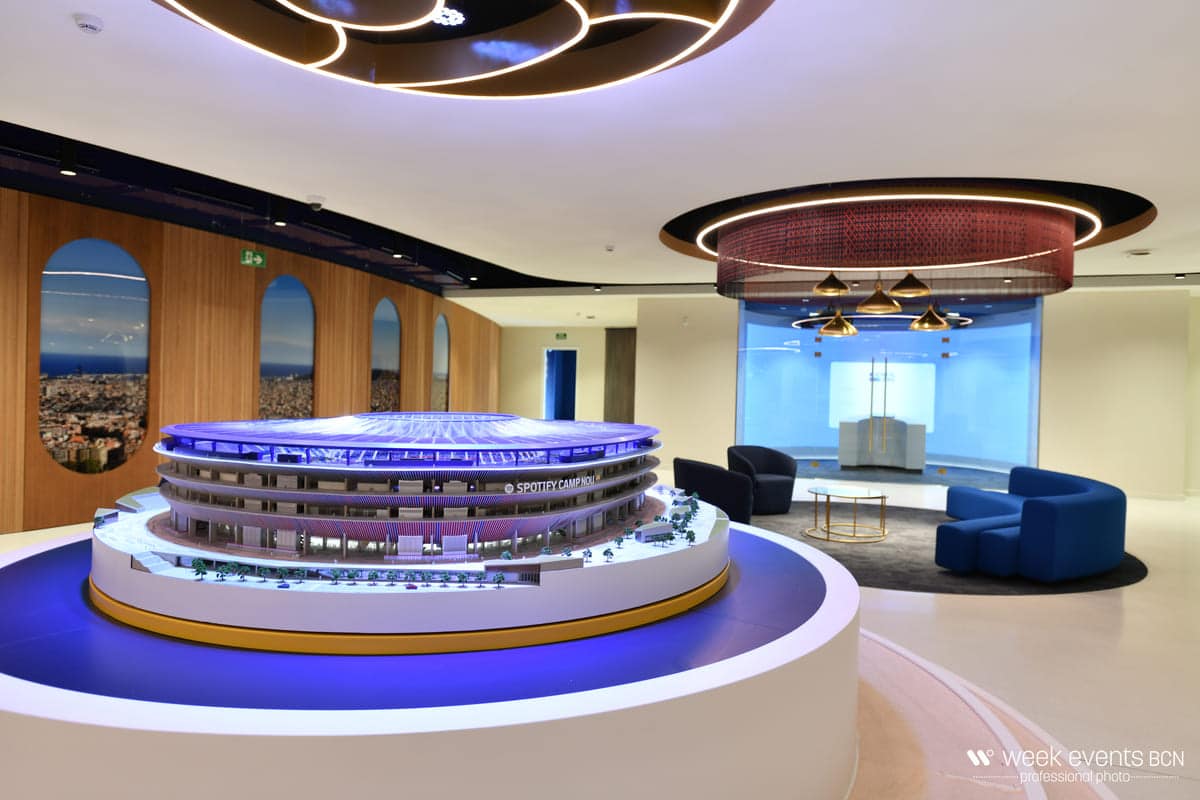
Phase 5: Installation and Integration
Installation is the most visible phase of the timeline, when concepts and components converge into a functioning experience. This phase demands intense coordination between multiple specialized teams working simultaneously in the same space.
Common questions we answer during the installation phase:
- Will we have access to the space during installation?
- How disruptive will this be to our daily operations?
- What happens if something doesn’t fit or work as expected?
The installation sequence typically begins with large architectural elements and structural installations, followed by integration of technology infrastructure and mounting systems, installation of The Immersive Cube™ and other signature elements, audio-visual equipment installation and calibration, lighting programming and scene development, and integration of interactive elements and control systems.
Each trade must complete their work in sequence, which means delays in one area cascade through the schedule. A millwork installation that runs over by two days can push back technology integration, which delays programming, which compresses quality assurance testing. Experienced installation teams build contingency into their schedules and have the authority to make field decisions that prevent minor issues from becoming major delays.
Organizations should expect their space to look chaotic during the early installation phase. It’s not uncommon for the space to appear worse before it appears better, as walls come down, wiring is exposed, and components are staged throughout the area. This is normal and expected.
The integration process involves extensive testing of all interactive elements, ensuring RFID activations trigger properly, projection mapping aligns precisely, and all technology responds as designed. This is also when content is loaded, programmed, and synchronized across multiple systems.
Installation quality is directly related to how well earlier phases were executed. Detailed design documents, accurate fabrication, and proper site preparation allow installation teams to work efficiently. Ambiguity or missing information at earlier phases creates expensive delays during installation.
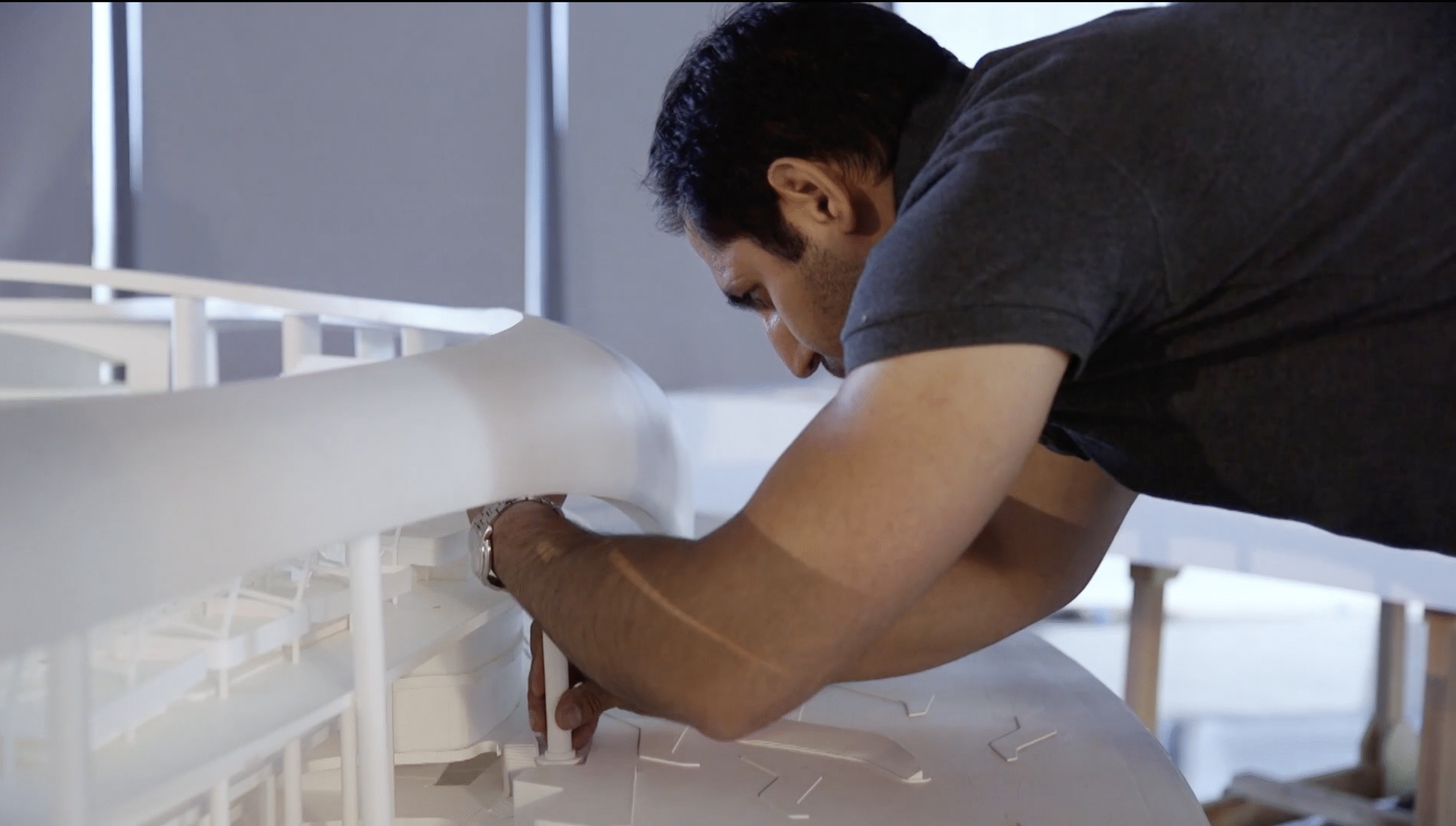
Phase 6: Content Integration and Programming
With physical installation complete, the space requires comprehensive content programming to bring the experience to life. This phase transforms hardware into a narrative journey.
Common questions we answer during the programming phase:
- Do we need to provide all the content?
- What if we don’t have good footage or photos?
- Can content be updated after opening when we get new renderings?
Content integration includes loading all media assets into their respective systems, programming show control sequences that orchestrate the entire experience, creating scene presets for different prospect types or event configurations, testing all interactive touchpoints and ensuring proper response, and final color correction and audio balancing across all displays.
Content programming also involves creating operational protocols for sales teams, documenting how to trigger different experiences, modify content for specific prospects, and troubleshoot common issues. The most sophisticated sales center is ineffective if sales teams can’t operate it confidently.
Organizations should involve their sales team during this phase, allowing them to experience the space and provide feedback before the official opening. This also begins their training process, ensuring they understand not just how to operate the technology but how to leverage it strategically during the sales process.
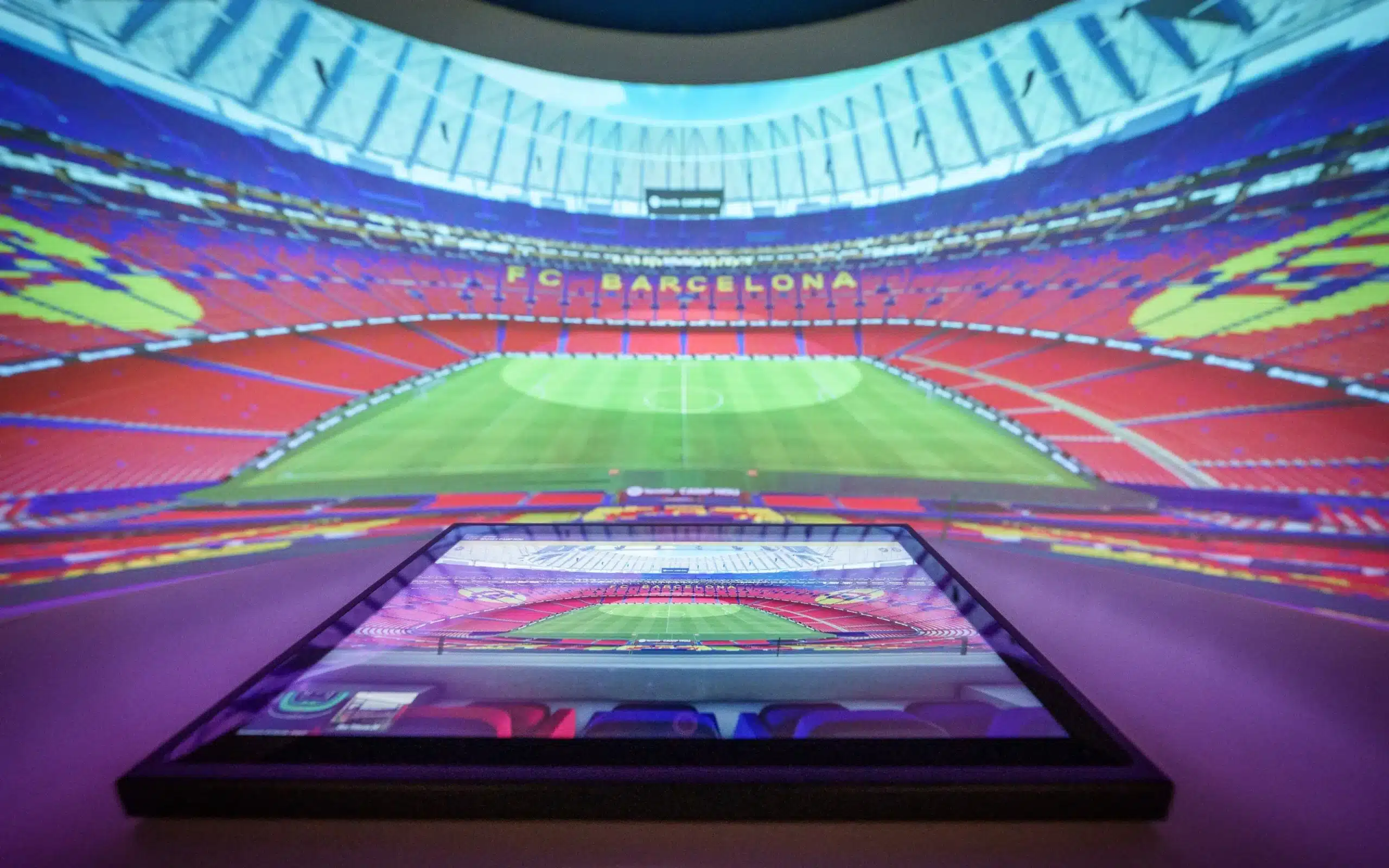
Phase 7: Testing, Training, and Refinement
The final phase before opening involves comprehensive testing, staff training, and refinement based on real-world usage. This phase is critical and should never be compressed, as it determines whether the sales center achieves its revenue potential.
Common questions we answer during the refinement phase:
- What kind of training is provided?
- Is it just a manual we have to figure out ourselves?
- What happens when our original sales team turns over and new people need training?
Testing involves running through complete prospect journeys from multiple starting points, stress-testing technology with extended operation periods, validating that all interactive elements respond consistently, ensuring audio and visual quality meets standards throughout the space, and confirming that control systems function intuitively for sales team operation.
Training for sales and hospitality teams includes facility operation and troubleshooting, how to leverage different zones for different prospect types, storytelling techniques that align with the spatial narrative, and protocols for special events, recruit visits, or VIP experiences.
Refinement happens based on feedback from testing and initial training sessions. Lighting may be adjusted for optimal viewing, audio levels balanced for conversation comfort, content pacing modified based on observed engagement, and control interfaces simplified based on user feedback.
This phase also includes developing operational documentation; user guides, troubleshooting protocols, and maintenance schedules that ensure the space continues performing optimally long after the installation team has departed.

Phase 8: Grand Opening and Optimization (Ongoing)
The grand opening marks the beginning of the sales center’s operational life, but professional partnerships don’t end when doors open. The optimization phase ensures the space continues evolving to meet changing organizational needs.
Common questions we answer during the lead up to the grand opening:
- What happens when something breaks?
- Can we call someone at 8pm the night before a major recruit visit?
- How long is support included?
- What does ongoing maintenance actually cost?
Post-opening support typically includes technical support for the first several weeks of operation, content updates as new renderings or construction milestones are achieved, training refreshers for new sales team members, and performance monitoring to identify opportunities for enhancement.
The most successful sales centers evolve continuously. As sales teams gain experience using the space, they discover new ways to leverage different zones or technology elements. As construction progresses, content updates maintain relevance and excitement. As prospect feedback is gathered, subtle refinements enhance effectiveness.
Organizations should plan for content refresh cycles that keep the experience aligned with project developments. A sales center that remains static for two years while construction progresses risks feeling outdated even before the stadium opens.
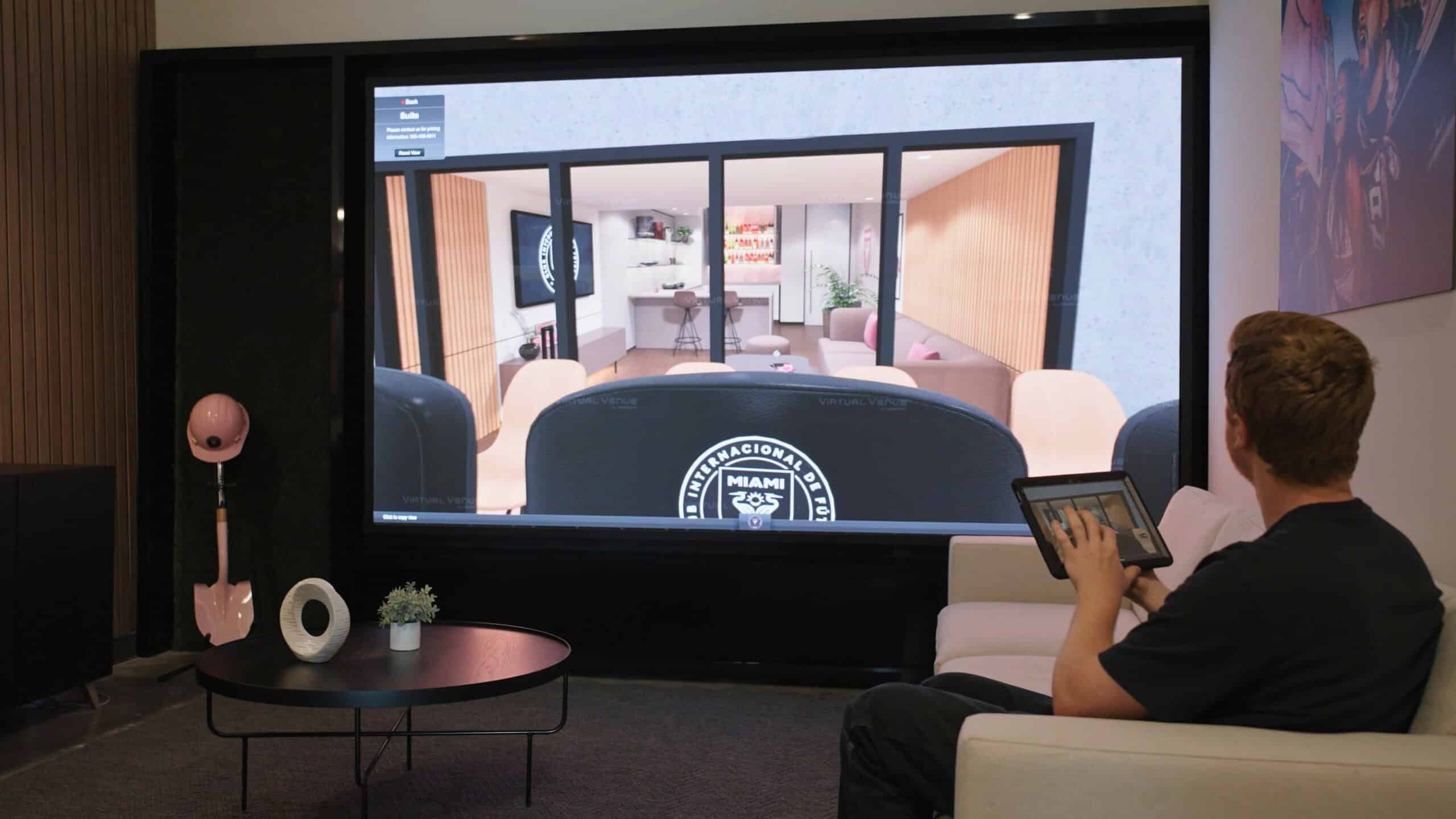
Total Timeline: From Kick-Off to Grand Opening
Aggregating all phases, organizations should expect approximately nine to twelve months from initial engagement to grand opening. Projects with compressed timelines can sometimes be completed in six months, while complex installations or those facing site challenges may extend to fourteen months.
What you’re probably wondering at this stage:
- Can we do this faster?
- What happens if we’re already behind schedule?
- What drives timeline more than anything else?
Several factors influence timeline duration. Projects requiring extensive site renovation or structural modifications extend the schedule, while spaces that need minimal preparation accelerate it. Organizations with complex approval processes or many stakeholders typically experience longer design phases, whereas those with empowered decision-makers move faster. Custom technology elements or proprietary installations require additional fabrication time compared to standard solutions. The availability of content assets significantly impacts the content integration phase. Organizations with extensive footage and photography move faster than those requiring new content creation. Finally, aggressive timelines compress contingency buffers, increasing risk when unexpected conditions arise.
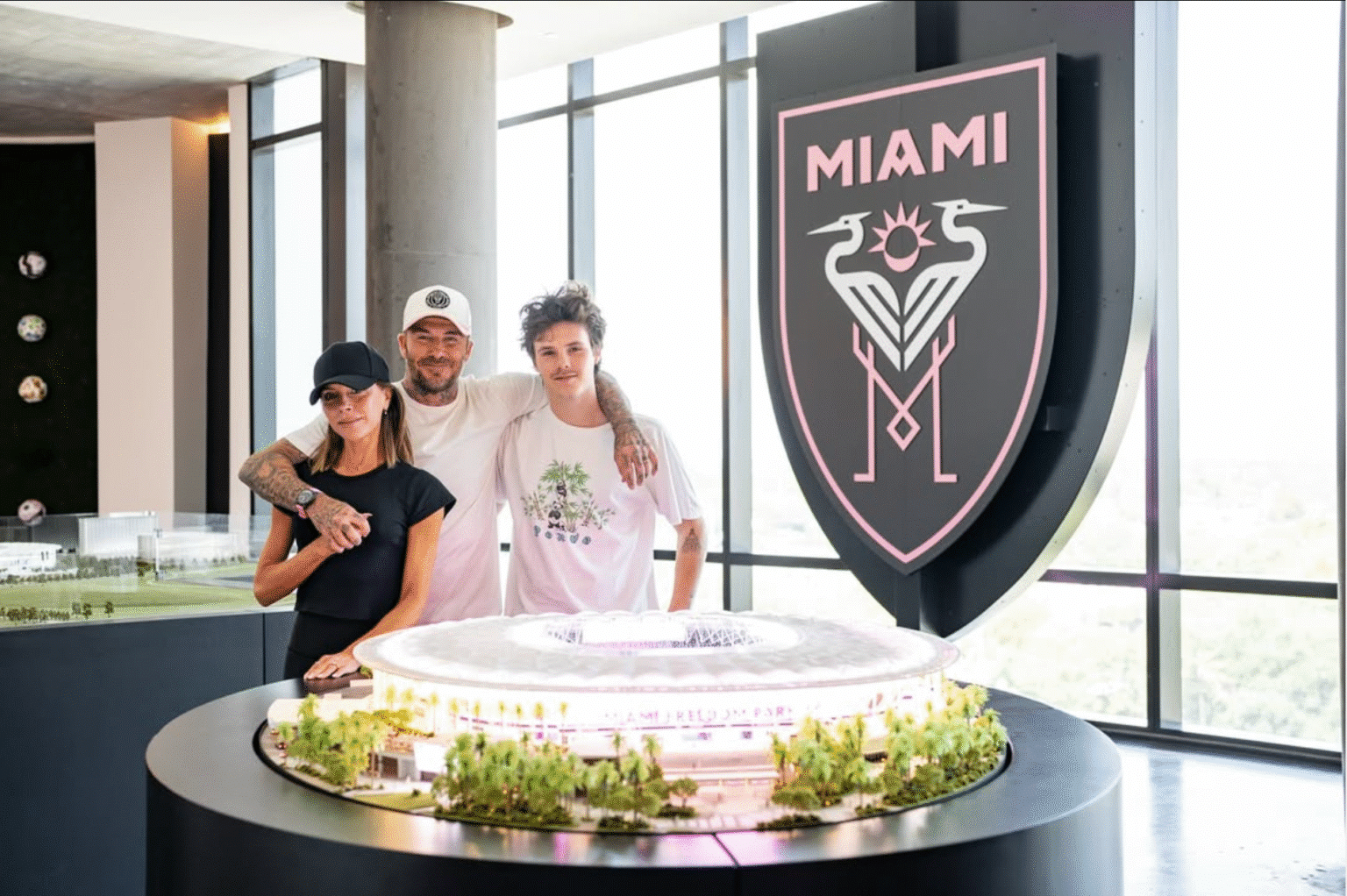
Critical Questions to Ask Potential Partners
When evaluating who should design and install your sales center, the timeline conversation reveals important differences in capability and approach.
Ask how many sales centers they’ve installed in the past 24 months. Firms that complete multiple projects annually have refined processes that prevent common delays. Those doing their first or second installation are learning on your project.
Ask about their post-opening support model. Is someone available when issues arise, or are you handed a manual and wished good luck? Sales centers are complex technical environments that require ongoing support, not one-time installations.
Ask for references from organizations currently operating their sales centers. How long has the installation been operational? What issues have arisen? How responsive has support been? The difference between a firm that installs and disappears versus one that partners for the long term becomes clear quickly.
Ask about content strategy. Do they simply install technology and expect you to fill it, or do they help develop content that drives the sales narrative? The most impressive technology is worthless without compelling content.
When to Start the Conversation
The question isn’t whether to build a sales center, but when to begin planning one. For organizations announcing new stadium construction or major renovations, the sales center should be operational before public announcement if possible, and certainly within months of announcement.
Every month without an operational sales center represents millions in potential revenue from prospects who are considering premium seats but lack the tools to envision the future. The sales center transforms abstract conversations about pricing and seat locations into emotional experiences that drive commitment.
Organizations facing compressed timelines should understand that while acceleration is possible, it requires early commitment to design direction, increased production resources that carry cost implications, compressed stakeholder review cycles, and acceptance of reduced contingency buffers.
The sales center isn’t an amenity, it’s a revenue engine. Planning its timeline with the same strategic importance as any other critical business initiative ensures organizations maximize the return on their stadium investment from the earliest possible moment.
The firms that help you navigate this timeline most effectively are those that have done it repeatedly, that control their own processes rather than coordinating others, and that understand your success is measured in closed deals, not impressive technology installations. The timeline conversation is where these differences become evident.

Will Roberson
Director of Client Engagement | “Client Champion”
At Advent, we specialize in creating integrated fan experiences that honor legacy while embracing innovation. Our team combines expertise in physical design, digital integration, and sports culture to build recognition spaces that move people; emotionally, physically, and digitally. Let’s create your next chapter together.